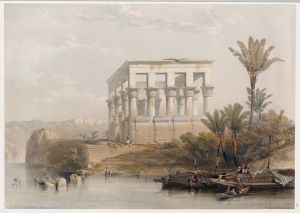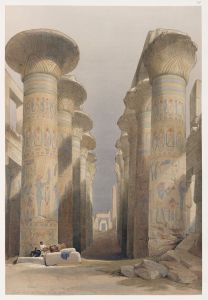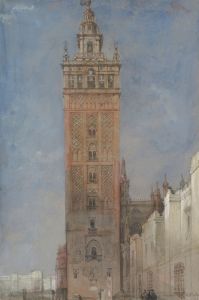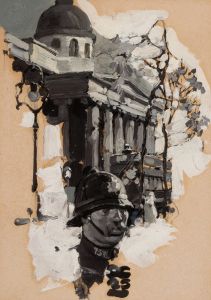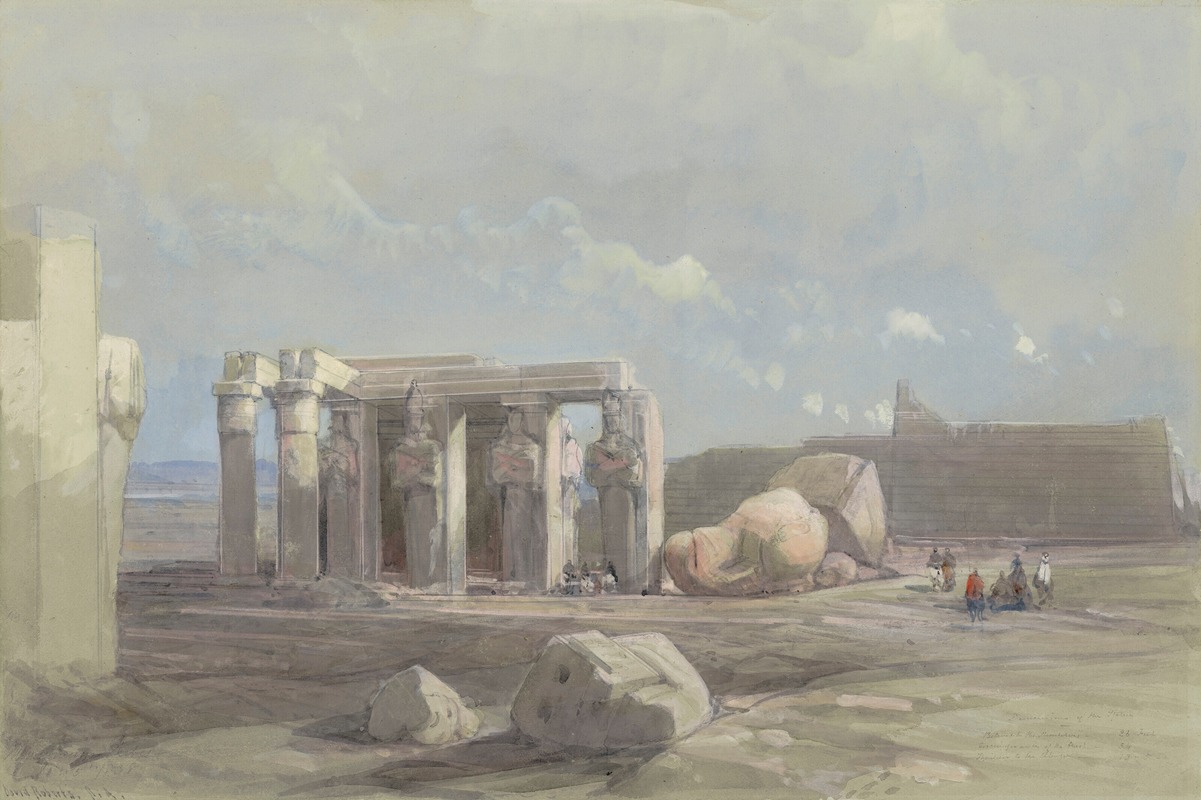
Fragments of a colossal statue at the Memnonium, Thebes
A hand-painted replica of David Roberts’s masterpiece Fragments of a colossal statue at the Memnonium, Thebes, meticulously crafted by professional artists to capture the true essence of the original. Each piece is created with museum-quality canvas and rare mineral pigments, carefully painted by experienced artists with delicate brushstrokes and rich, layered colors to perfectly recreate the texture of the original artwork. Unlike machine-printed reproductions, this hand-painted version brings the painting to life, infused with the artist’s emotions and skill in every stroke. Whether for personal collection or home decoration, it instantly elevates the artistic atmosphere of any space.
"Fragments of a Colossal Statue at the Memnonium, Thebes" is a lithograph created by Scottish artist David Roberts in the 19th century. The artwork is part of Roberts' renowned series of illustrations depicting scenes from Egypt and the Near East, which he produced during his travels in the region between 1838 and 1839. These illustrations were later published in the monumental work The Holy Land, Syria, Idumea, Arabia, Egypt, and Nubia, released between 1842 and 1849.
The lithograph portrays the fragmented remains of a colossal statue at the Ramesseum, an ancient mortuary temple located in Thebes, modern-day Luxor, Egypt. The Ramesseum is famously associated with Pharaoh Ramesses II, who reigned during the 13th century BCE in the New Kingdom period of ancient Egypt. The colossal statue depicted in the artwork is believed to represent Ramesses II himself. Once standing at an estimated height of 17 meters (approximately 56 feet) and weighing over 1,000 tons, the statue is now in ruins, with its massive fragments scattered across the temple complex.
Roberts' depiction captures the grandeur and scale of the statue's remains, emphasizing the contrast between the monument's former glory and its current state of decay. The lithograph also includes details of the surrounding architectural elements, such as columns and hieroglyphic inscriptions, providing a broader context of the Ramesseum's historical and cultural significance.
David Roberts' works are notable for their accuracy and attention to detail, as well as their romanticized portrayal of ancient sites. His illustrations were based on sketches and notes he made during his travels, which were later transformed into lithographs by Louis Haghe, a prominent lithographer of the time. These works played a significant role in popularizing the study of ancient Egypt and the Near East in 19th-century Europe, contributing to the growing interest in Egyptology.
Today, "Fragments of a Colossal Statue at the Memnonium, Thebes" is recognized as an important visual document of the Ramesseum and its iconic statue. It serves as both an artistic achievement and a historical record of one of ancient Egypt's most remarkable monuments.





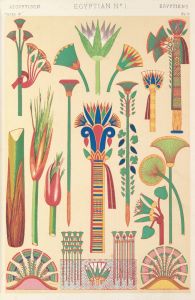
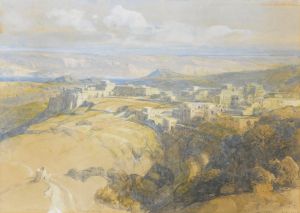
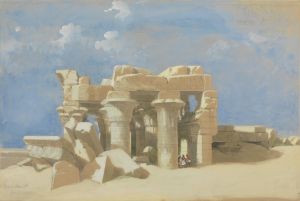
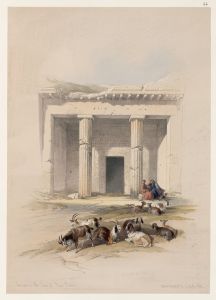
![Karnac [Karnak]. Nov. 29th, 1838](/imgs/217503/s/david-roberts-karnac-karnak-nov-29th-1838-5a10b435.jpg)
![Lateral view of the temple called the Typhonæum, at Dendera [Dandara].](/imgs/217507/s/david-roberts-lateral-view-of-the-temple-called-the-typhonaeum-at-dendera-dandara-b378b9d7.jpg)
![Temple of Edfou [Idfû], ancient Appolinopolis, Upper Egypt.](/imgs/217546/s/david-roberts-temple-of-edfou-idfu-ancient-appolinopolis-upper-egypt-2a77d2d6.jpg)
![Temple of Wady Kardassy [Qirtâsî] in Nubia.](/imgs/217550/s/david-roberts-temple-of-wady-kardassy-qirtasi-in-nubia-d2cce283.jpg)
